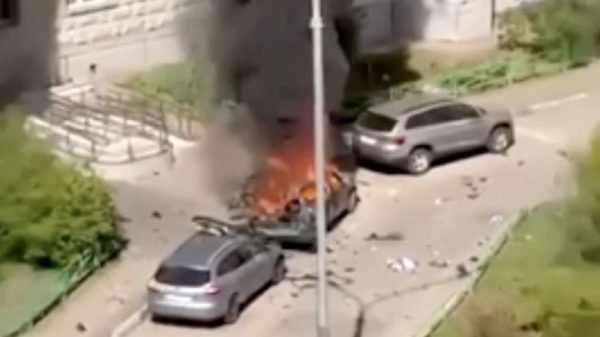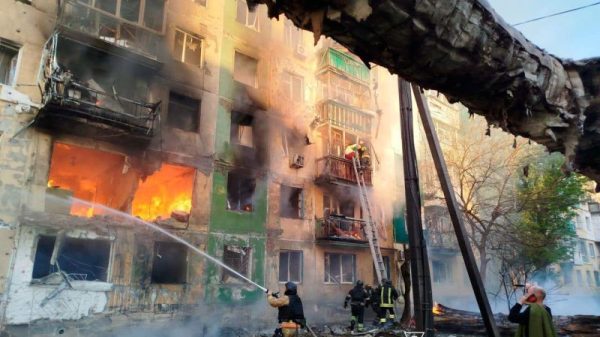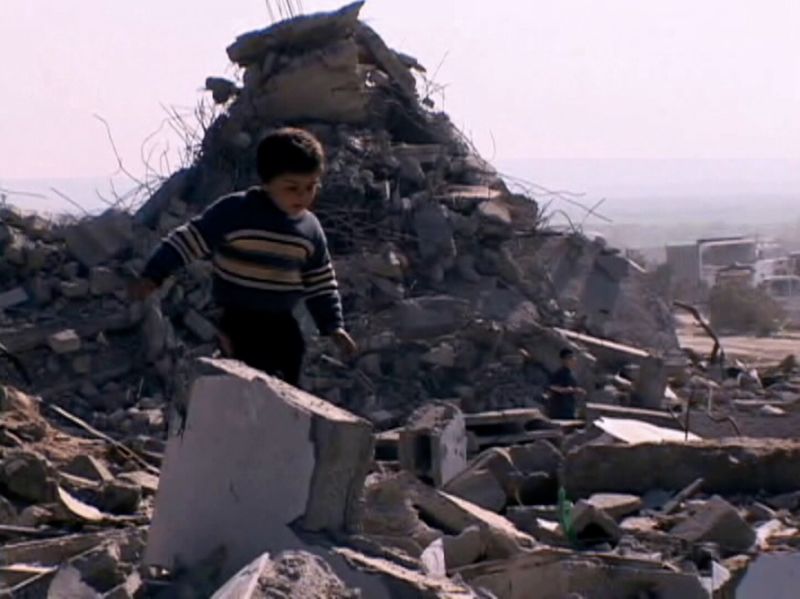“Get down!” the medic in the front seat hissed as our ambulance approached the Israeli checkpoint.
I could see through the front window tanks by the side of the road, nervous Israeli soldiers raising their guns as we approached.
This was what Israel had dubbed “Operation Cast Lead,” the first in a series of flare-ups of various durations between Israel and Gaza in 2012, 2014, 2021 and 2022. The ongoing operation in Gaza was preceded by another one this May.
After a brief exchange with the medics in the lead ambulance, the soldiers waved us through without inspecting the ambulances.
It was the deepest Israeli ground operation into Gaza since the withdrawal from the Strip in 2005. Then, Israeli troops largely avoided the most built up and crowded areas, particularly Gaza’s eight crammed refugee camps. They were well aware that entering into the narrow alleys of camps like al-Shati, one of the most crowded, would be risky. Their focus was on controlling the periphery of urban areas.
Israel’s tactics have always been to move fast, control as much territory as possible, but avoid street-to-street, house-to-house fighting where a weaker opponent can take full advantage of the terrain. Entering urban areas in Gaza, however, would bring in an entire new element to the fight.
At the moment Israeli forces are engaged with Hamas. But Gaza is home to a myriad of armed Palestinian groups, including Islamic Jihad, the Popular Front for the Liberation of Palestine (PFLP), the Democratic Front for the Liberation of Palestine (DFLP) to name just a few. They don’t have Hamas’ manpower or weaponry, but they’re numerous enough to put up serious resistance.
In March 2008, I went to Gaza to cover an Israeli incursion into the north, this time dubbed “Hot Winter,” yet another attempt to stop rocket fire from Gaza. At the time, Hamas was in full control of the Gaza Strip, having expelled the rival Fatah faction the previous year. But when I arrived in the area where Israeli forces were trying to advance, it wasn’t Hamas fighters but rather gunmen from the PFLP who were running street battles with Israeli troops. They ducked in and out of alleyways, sprinted across streets with rocket propelled grenade launchers and Kalashinkov assault rifles. The young men were almost giddy with excitement. They finally had a chance to fight Israeli troops on their own ground. Eventually, the Israelis pulled out. The rocket fire continued.
Going back to the summer of 1982 when Israel invaded Lebanon in pursuit of the Palestine Liberation Organisation, Israeli forces made it all the way to Beirut then stopped on the outskirts, establishing a siege much along the lines announced Monday by Israeli Defense Minister Yoav Gallant. It was clear even back then that entering Beirut, particularly the Palestinian refugee camps, would be a deadly mission for all.
During the siege that followed, Israeli warplanes and artillery pummeled West Beirut, but ground troops stayed out of Beirut proper.
In the end, under American pressure, a deal was worked out whereby Palestinian fighters would evacuate Beirut and Lebanon to Yemen, Tunisia and elsewhere. It was only after they left that Israeli troops took control of the western part of the city. Soon afterwards in September 1982, with Israel in control of West Beirut, the Israeli military, under the leadership of then Defense Minister Ariel Sharon, allowed their right-wing Christian Lebanese allies, the Kataib, to enter Sabra and Shatila refugee camp and slaughter over a thousand civilians who no longer were able to defend themselves because the men of fighting age and their weapons had left as part of the US-brokered deal with the PLO.
The Israeli military has now mobilized 300,000 reservists for what is now widely believed to be an unprecedented incursion into Gaza – and perhaps, some speculate, a re-occupation of the enclave – in the aftermath of Hamas’ surprise attack Saturday, which killed more than 1,000 people in Israel.
What awaits it is a Hamas that has shown, despite the cruelty vividly displayed in its Saturday attack, a level of military capability far beyond what was previously thought. It is probably well prepared for the next phase in this war.
Since the weekend, Israel has launched hundreds of punishing strikes on Gaza, turning some areas into wastelands of shattered concrete and twisted metal. In the process, hundreds of Palestinians, including many civilians have been killed. And this is just the initial phase of this war.
If it comes, the ground operation will be far bloodier and more destructive. Israeli forces will also have to be mindful that spread around Gaza are more than a hundred Israelis – soldiers and civilians, including women and children – held captive by Hamas. And although no one outside Hamas knows where they’re being held, it’s likely they’re in the most difficult areas for Israeli forces to access, possibly in crowded refugee camps.
As eager as Israel’s leaders may be to deal a fatal blow to Hamas, it will come at a very high price. To all.







































